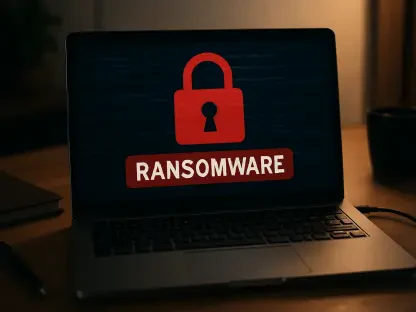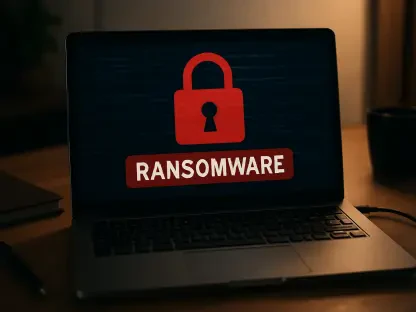Recent revelations have exposed stark vulnerabilities within the U.S. water systems, prompting an urgent call for enhanced cybersecurity. A distressing investigation by security researchers unveiled numerous Human-Machine Interfaces (HMIs) misconfigured, recklessly open to internet access without adequate security barriers. This revelation puts into perspective the critical need to address cyber threats to water systems to safeguard public safety and ensure continuous and secure water delivery.
Understanding the Current Cyber Threat Landscape
The cyber threat landscape facing water systems is increasingly complex and troubling. With the discovery of hundreds of industrial control system interfaces accessible online, the risk of cyber interference has reached an alarming level. These interfaces, linked to municipal water facilities, provide unauthorized users with insight into vital operations such as tank levels and valve manipulations. The potential for misuse becomes apparent when considering that various systems lacked basic authentication controls, exposing the operations to widespread vulnerabilities.
Several incidents have underscored the potential dangers posed by cyber vulnerabilities within water systems. Previously unauthorized access granted certain individuals full control over critical functions like pumps and chemical feed setups, posing significant risks to both health and safety. Incidents involving pro-Russian hacktivists manipulating HMIs to push equipment beyond operational safety limits serve as stark reminders of what is at stake. The immediate collaboration between agencies and stakeholders has been crucial in reducing the number of vulnerable systems and emphasizes the need for a vigilant approach to securing these infrastructure elements.
Importance of Cybersecurity in Protecting Water Infrastructure
Implementing robust cybersecurity measures is not just prudent but vital for the protection of water infrastructure. Securing water systems ensures that disruptions are minimized and public health remains uncompromised. When responsible entities take preventive measures, they can effectively mitigate the risk of cyber-enabled service interruptions, maintaining the integrity of water supplies.
Beyond ensuring safety and reliability, employing sound cybersecurity protocols within water systems can lead to significant financial and operational efficiencies. By preventing cyber-related disruptions, facilities can avoid costly downtimes and potential damages. Furthermore, the adoption of effective security practices strengthens trust among stakeholders, fostering a sustainable and resilient approach to managing public water infrastructure.
Key Best Practices for Enhancing Water System Security
Enhancing the security of water systems requires diligent application of best practices tailored to address specific vulnerabilities. The involvement of stakeholders, from municipal leaders to federal agencies, is crucial in the coordinated effort to safeguard these essential services.
Implementing Strong Access Controls
Implementing strong access controls is a fundamental step in securing water systems. By setting up rigorous procedures, facilities can ensure that only authorized personnel gain entry to essential operations. A case study on municipal water facilities demonstrates the drastic improvements achievable through fortifying access points. Encouragingly, increased awareness and strategic changes have led to a noticeable enhancement in security, showcasing the practical benefits of robust access management.
Ensuring Regular System Audits and Monitoring
Frequent audits and active monitoring are indispensable in detecting and mitigating cyber threats before they escalate. These efforts enable facilities to identify and address vulnerabilities proactively. Continuous monitoring exemplifies a proactive stance toward cybersecurity, where real-time threat detection can significantly reduce the potential repercussions of cyber intrusions. Prioritizing consistent scrutiny of systems ensures that emerging threats are swiftly identified and countered, securing the operational health of water infrastructure.
Deploying Advanced Authentication Measures
In addition to strong access controls, deploying multifactor authentication mechanisms adds a vital layer of defense. Incorporating this best practice into existing security frameworks strengthens authentication processes, making unauthorized access significantly more challenging. Real-life scenarios have demonstrated the effectiveness of multifactor authentication in enhancing system security. With future threats anticipated, adopting advanced authentication protocols is essential for operational resilience.
Conclusion and Recommendations
The investigation into internet-exposed HMIs painted a concerning picture of vulnerabilities within water systems, highlighting the pressing need for comprehensive cybersecurity measures. By adopting best practices, stakeholders can effectively safeguard against the risks associated with cyber threats. Decision-makers must prioritize implementing strong access controls, consistent audits, and advanced authentication to protect critical water infrastructure.
Moreover, a focus on collaboration and awareness can amplify efforts toward a fortified defense against potential cyber intrusions. Stakeholders at every level must recognize the significance of cybersecurity in maintaining essential water services, ensuring that robust defenses are in place to mitigate the growing risk landscape. Embracing these actionable strategies creates a more secure environment, fostering confidence and resilience in the face of unprecedented cyber challenges.









